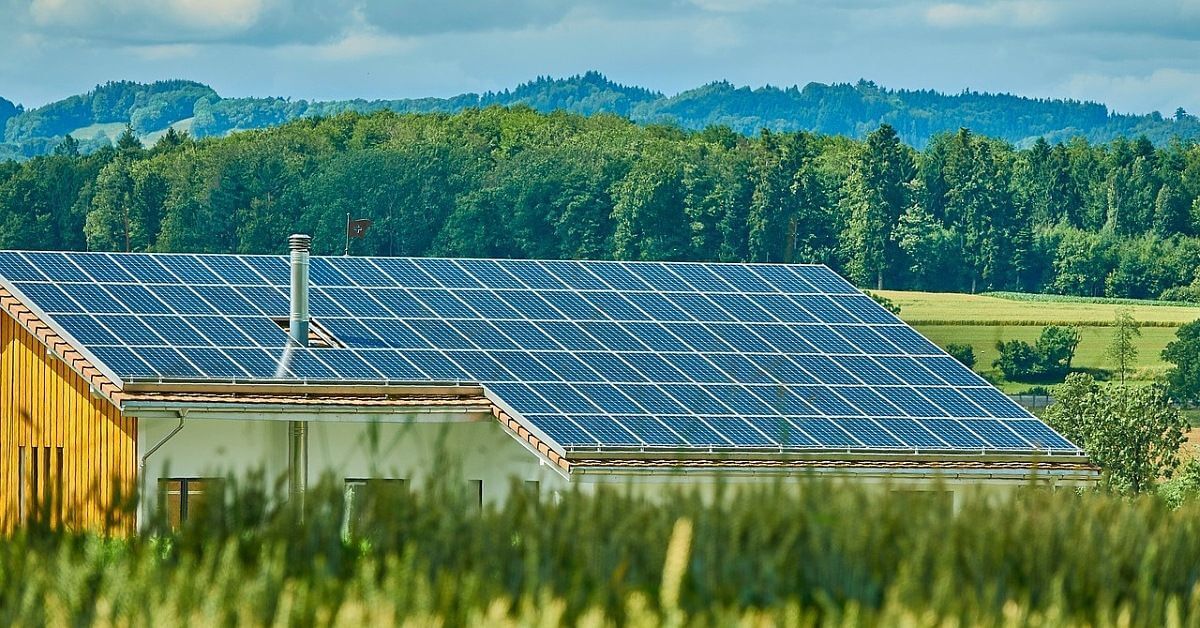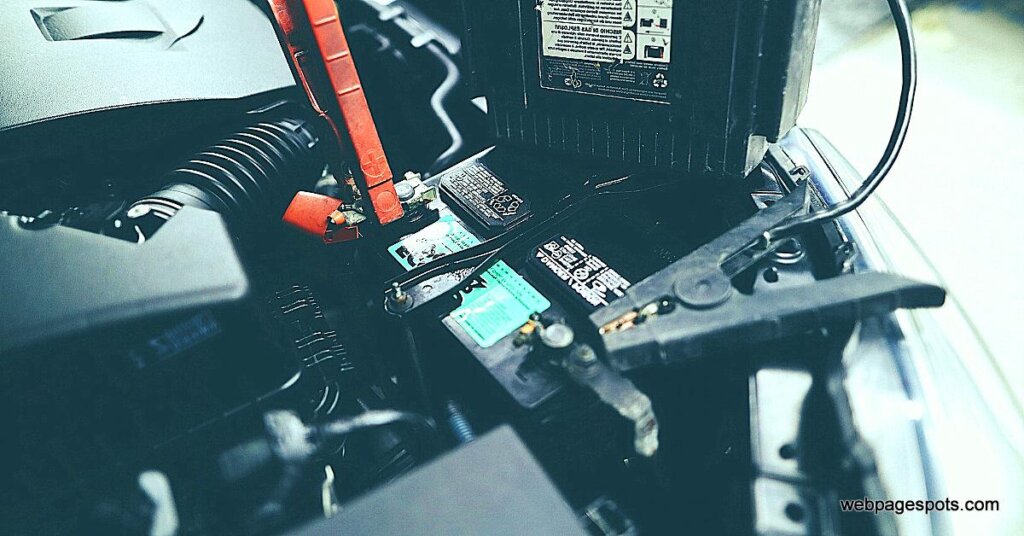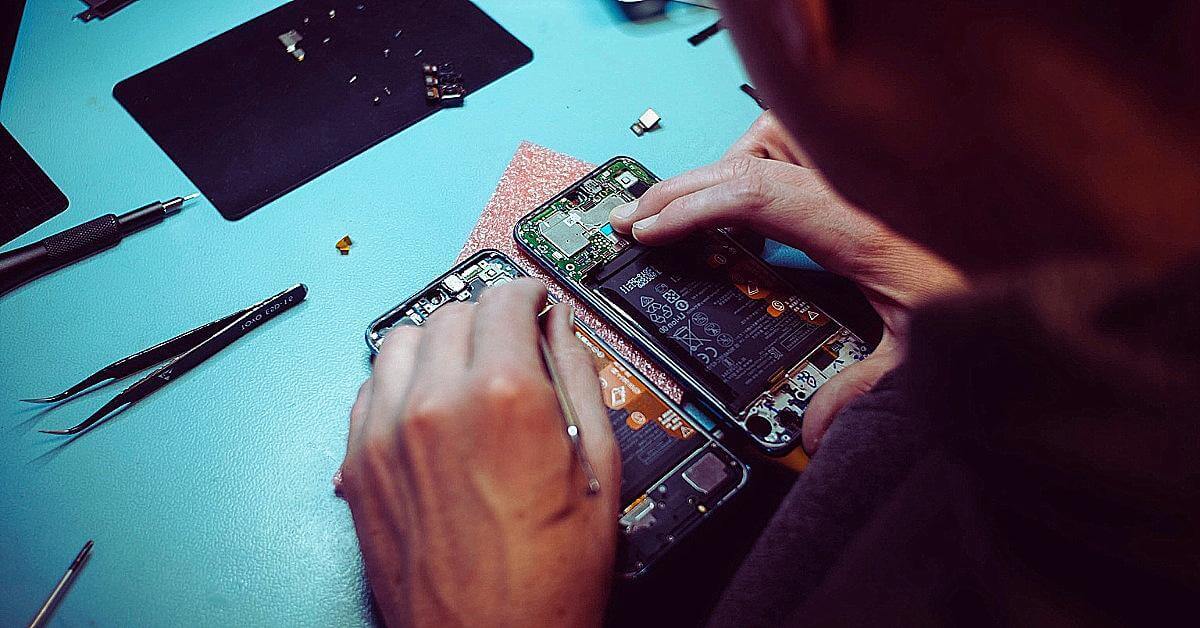3 best batteries for off-grid solar energy systems
This blog post may contain affiliate links. If we find a product or service to be useful, we encourage you to visit the website via that link. If you make a purchase through our referral link, we may receive a commission. Rest assured, you will not be charged any additional fees. By using these links, you can support us while making your purchase. For more information visit here.
The 3 multi-purpose best batteries for off-grid solar energy systems
The question that somebody using energy inevitably asks at some point is, what are the most straightforward batteries for an off-grid solar energy system? Thanks to falling renewable energy prices, more people want to use energy resources too:
- Economize Money
- Become more energy independent
- Break their dependence on large energy companies
However, to put in a renewable energy system in most cases, you would need to make an initial investment that you haven’t returned to for several years. One of the most significant expenses related to energy systems is the battery in the battery bank. So, it’s crucial to pick the right battery for your off-grid system (and keeping the battery alive as long as possible is essential as well)!
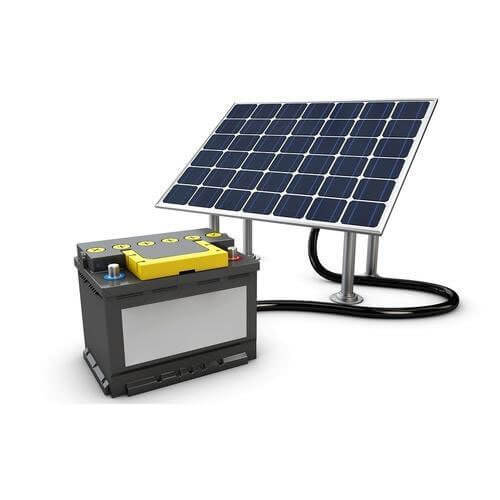
You do not need to buy new and dearer batteries.
Before we tell you the names of the three batteries, we recommend checking your solar system’s battery bank. It’s important to notice that you don’t buy the three batteries we recommend fresh.
- Old or used batteries at no cost (or dirt cheap).
- To return them to “Renewal” status.
- Then, rather than buying new-energy batteries, use a rebuilt (as-new) battery in your alternative energy-system battery bank.
Doing so will save you a great deal of money when building a battery bank, and it helps to make energy accessible on another budget! But this still leaves the question …
Which are the most efficient batteries to use in your renewable energy system? In this article, we will try to answer that question straightforwardly. Here’s what we’ll do:
- Lead Acid Batteries VS. Other Battery technologies in an extremely large battery bank
- Deep Cycle vs Shallow Cycle Batteries in a large battery bank
- Lead-acid batteries (FLA) VS. Sealed Lead-Acid Batteries (SLAs) installed in a battery bank
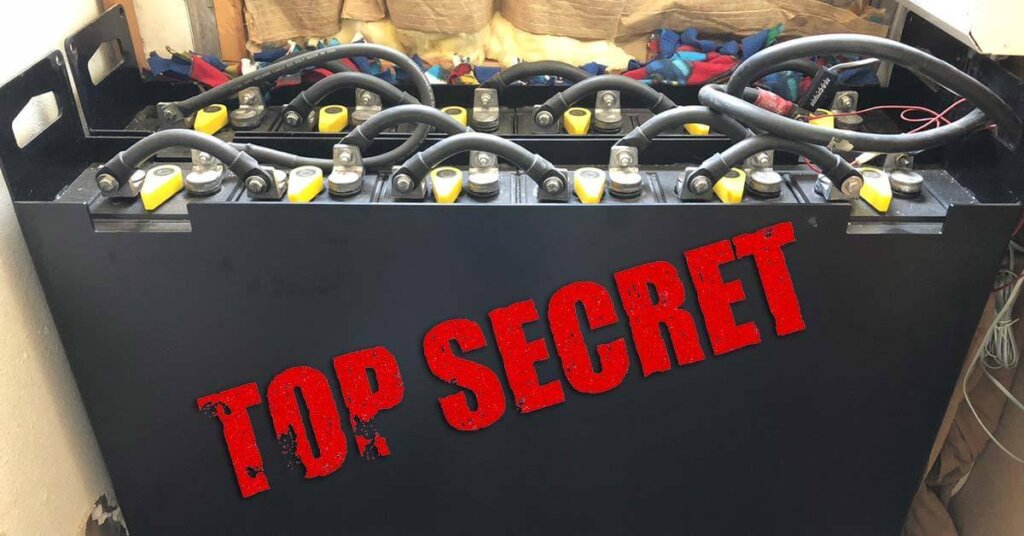
Lead Acid Battery vs. Other Battery Technologies
Renewable energy systems use batteries originally designed for other purposes. The most prominent example of this is lead-acid batteries, which have dominated the industry for quite some time.
A deep-cycle storage battery has proven to be one of the simplest (and cheapest) battery types for alternative power system battery banks for these tasks:
- People will face frequent holidays.
- They’re cheaper than other types of batteries.
- They need a higher level of durability in the battery bank.
- Supply more consistent performance than other batteries.
They are widely produced because if there’s a demand for battery space in your battery bank, they’re easy to switch. And the initial investment in lithium-ion batteries is much more than that of lead-acid batteries.
Powerwall may eventually replace it, but deep-cycle lead-acid batteries are the most practical and affordable solution for a home battery bank at the moment.
Deep cycle vs. Shallow cycle (car) battery
When the renewable energy industry was in its infancy, those who wanted to travel entirely off the grid often had to work with car batteries. However, car batteries were never designed to be continuously draining and recharging (requiring to be drained by solar panels or turbine systems).
They were only for starting and ignition purposes. If you peek inside one, you’ll see that there are many thin plates inside the car batteries. These plates have an outsized total expanse that facilitates many chemical reactions. Once you start your car, these reactions produce the sudden burst of power required for ignition.
On the other hand, Deep Cycle Batteries have thick lead plates that leave little space for chemical reactions. Although they produce less current, they’re designed to run for longer periods. In short, car batteries are “Shallow Cycle” batteries that may give out quickly when used as renewable energy storage.
Flooded lead-acid batteries (FLA) VS. Sealed lead-acid batteries (SLA).
Before explaining that the three batteries are optimal for battery banks of different energy systems, it should be clarified why flood lead-acid batteries (FLAs) are better for renewable energy than lead-acid batteries (SLAs).
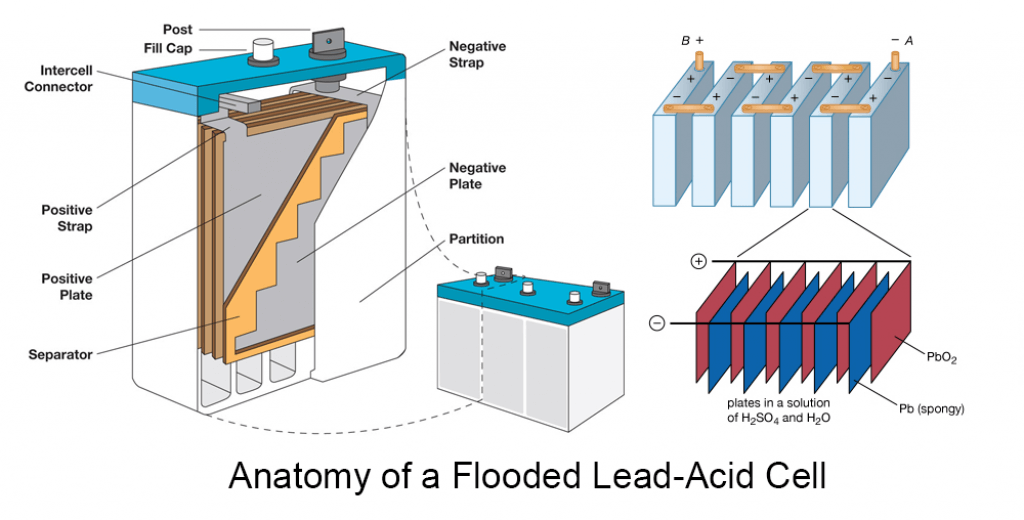
Many people prefer SLAs because they require less maintenance. Unlike FLA, which must regularly check water levels, SLA may be a more effective method. However, sealed lead-acid batteries have two significant drawbacks: they’re sensitive and wear out quickly.
So if you intend to use your solar array or wind generation system daily, there is likely to be an issue. So, below are the categories of flooded lead-acid batteries best for off-grid solar energy systems:
Battery Reconditioning, Watch a free Presentation, If You’re In United Kingdom
3 best batteries for an off-grid solar energy system.
We know you want a lead-acid battery, a flooded battery (FLA) that offers deep-cycle performance. Here are three of my favorite batteries for off-grid solar energy systems. Below are the categories of flooded lead-acid batteries best for off-grid power systems:
1. Golf cart battery
Golf cart batteries are the original widely manufactured batteries on this list. They also work excellently in other energy system applications. Therefore, it’s no surprise that they’re one of the most commonly used batteries in battery banks for renewable energy systems. Although golf cart batteries may have a comparatively short life of 5 to 6 years, golf cart batteries are quite durable and cheap for their lack in this area.
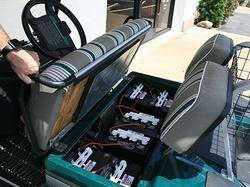
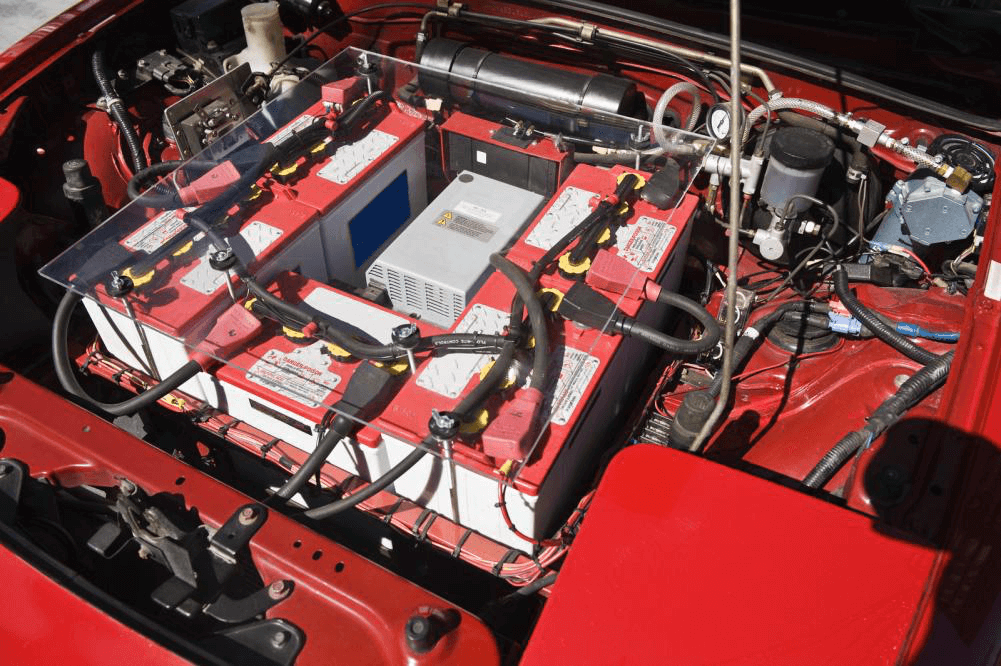
Besides, golf cart batteries may be found almost anywhere, making them a superb choice for your battery bank. If you wish to build a high-quality but inexpensive battery bank, the simplest option is:
- Get old or “dead” batteries at no cost or cheap from golf courses or golf cart shops (call them and ask if you can lay down their old batteries).
- Rebuild those batteries with a battery reconditioning program to new conditions.
- Use those rebuilt batteries in your battery bank.
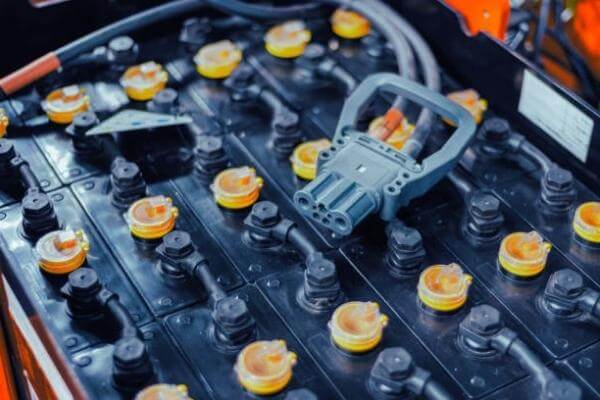
2. Industrial or forklift battery for off-grid solar energy system
A battery bank that uses one or more industrial batteries follows the same philosophy as a golf cart battery bank. Rather than counting on small batteries with multiple wires, you can utilize some or all of your batteries to store all of your energy. Because these batteries aren’t usually manufactured to exact dimensions, you may be able to customize one to meet your needs.
Otherwise, you can try and find an old industrial or forklift battery that’s the proper size for your system and use it. Like golf cart batteries, there are sometimes ways to get free or cheap forklift batteries. One way is to call or visit industrial companies and see if they need old or “dead” forklift batteries. Offer to eliminate it for them or pay them a small amount for it.
If they agree, you can retrieve the battery and use it instead of buying a brand-new, expensive industrial battery. But if you opt for a custom-built battery instead, you should expect to pay dearly. The good news is that these batteries are usually made for fifteen to twenty years.
Other things to consider:
These larger batteries are stronger and tougher. There could also be advances in battery technology that will make batteries obsolete in the coming years. But, suppose you do not have any idea of making a big investment (from $2,000 to $10,000) and are okay with keeping your battery in top condition. In that case, industrial batteries could also be right for you.
3. L16 batteries
If you want a battery with much greater capacity than a golf cart battery but don’t need to spend on industrial batteries, the L16 batteries are right at the bottom.
These flooded lead-acid batteries were originally designed for supermarket floor scrubbers.

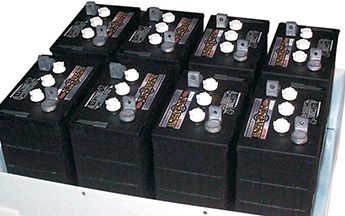
The most excellent thing about these batteries is that they’re slightly longer than golf cart batteries – about six to eight years. However, they’re often twice as heavy, and 6-volt models are maybe twice as expensive.
Conclusion
Different homes will need additional electricity and require battery banks sized accordingly. If you build an electric battery bank using any of the three batteries mentioned above, you must create an appropriate battery bank for your needs. There are some exciting and recent developments in the world of energy batteries.
Just like the Lithium-Ion Tesla Powerwall, these new-generation products will hit the market within years. But at the moment, our three best batteries for off-grid solar energy systems are golf cart batteries, L16 batteries, and industrial batteries. And if you’re interested in saving money on your battery bank, you’ll be able to find out how to:
- Old or “dead” golf cart batteries, L16 batteries, or industrial batteries at no cost or inexpensive
- Return them to 100% working condition
- Use those “like-new” batteries instead of expensive override batteries to save money!
Good luck with your battery bank! Battery Reconditioning brings your old batteries back to life.
Was it helpful to you? If you liked this post, please tell us. Thank you for reading this article. In any case, you can send us your suggestions or experiences in the form of comments, and we will feel indebted to you.
Understanding the importance of copyright law is absolutely vital, as it strictly prohibits any reproduction or replication of works without the explicit permission of the author. Any unauthorized duplication of content will lead to legal action for copyright infringement under Section 14 of the Copyright Act.
